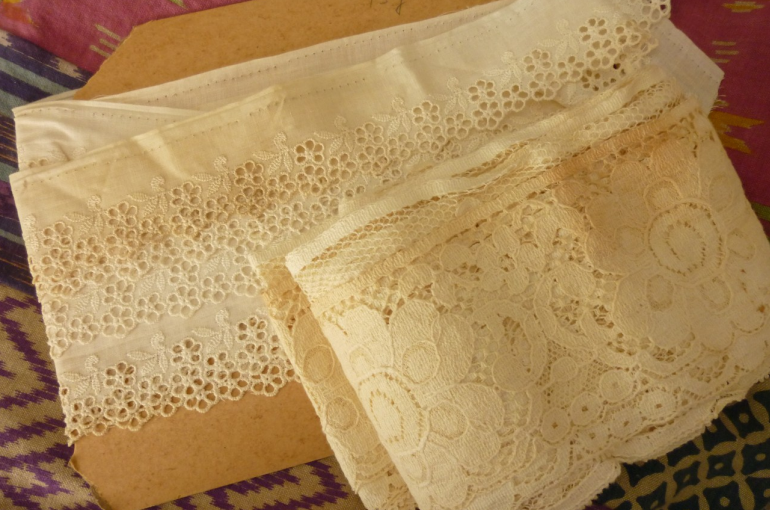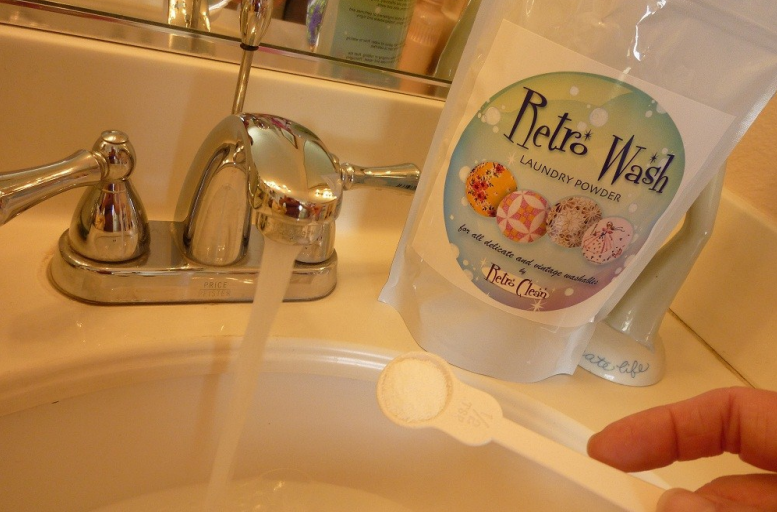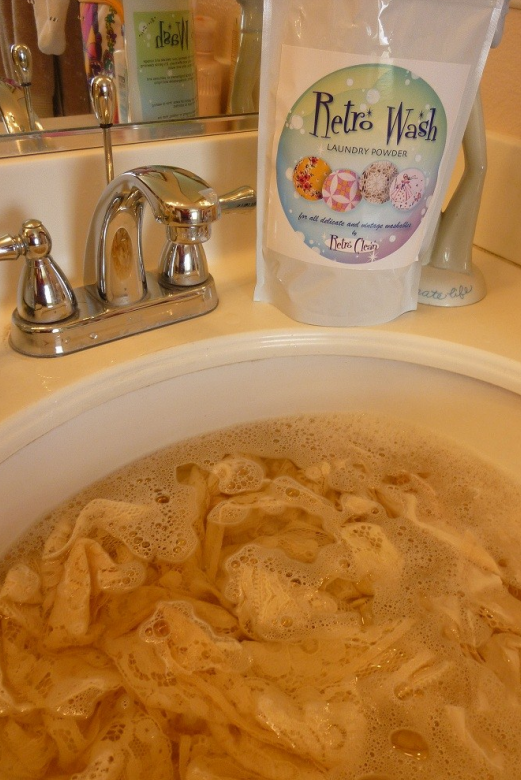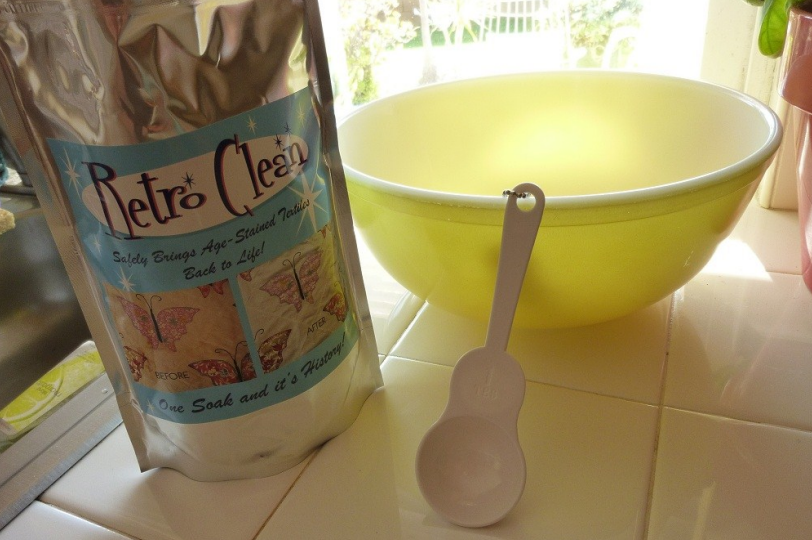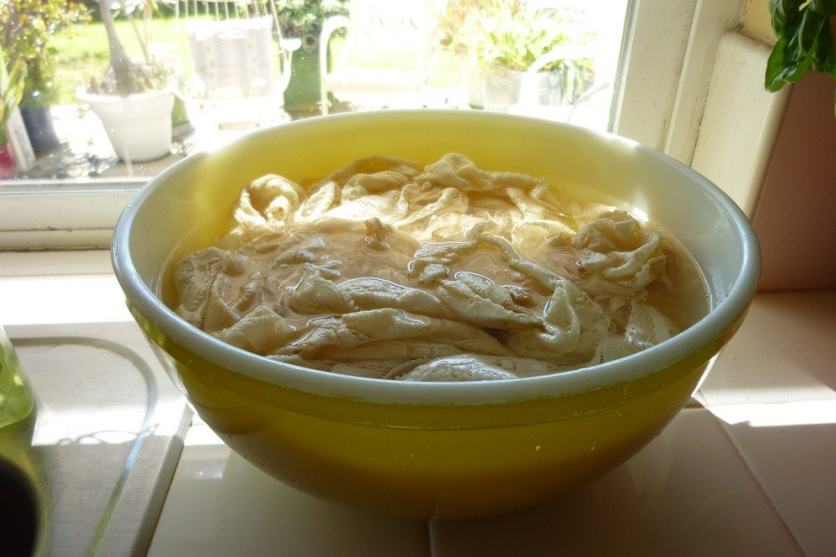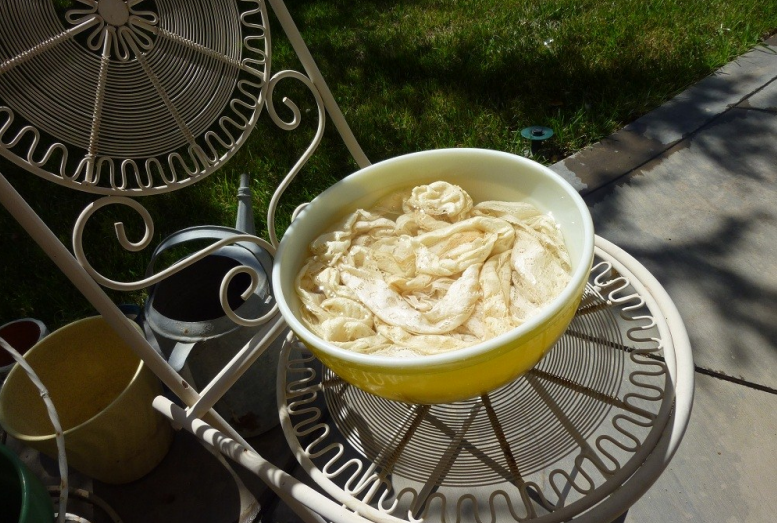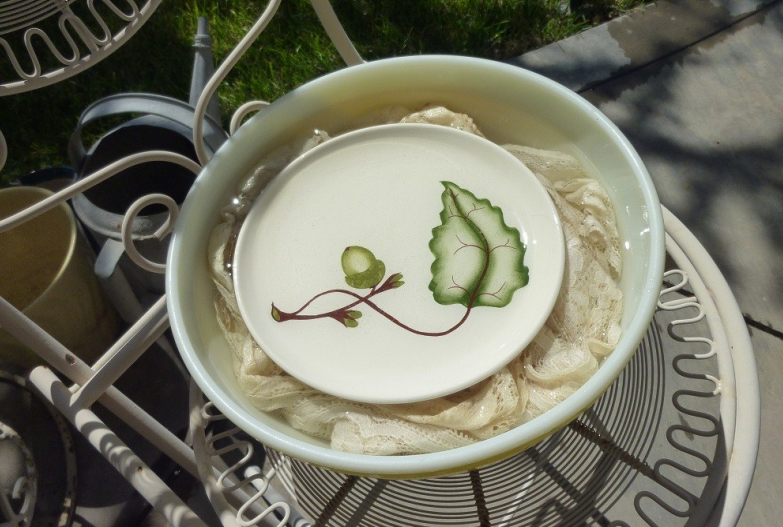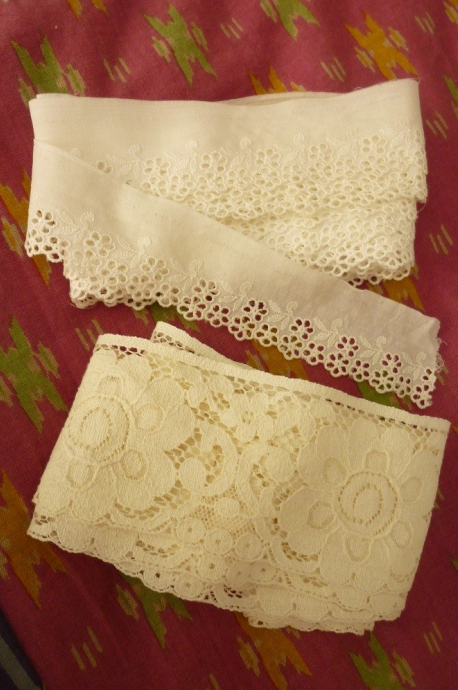Product Tutorial
Welcome to the Retro Clean
tutorial for safely removing yellow and brown age stains from vintage textiles or any washable fabric that may have similar stains. Retro Clean
is safe to use on all washable fabrics (including cottons, silks, wools, etc.). It removes stains and odors related to water and smoke damage, mold, coffee, tea, blood, tobacco, pet stains, baby formula, and perspiration. In the following tutorial, Mindy will walk you through the entire process. We strongly recommend that you also read our Best Practices article on our homepage, which will guide you through some specific considerations when working with vintage fabrics and clothing.
01
I found this vintage lace at an estate sale. It had brown age stains. When I unwound the lace from the cardboard, the acids from the cardboard had caused the lace to turn brown and splotchy. If the items you are working with are colored, it is always wise to check that they are colorfast prior to immersing them in water (review our Best Practices article on our homepage for info. on checking for colorfastness).
02
Before soaking your item in Retro Clean
to remove the stains, begin by washing your items in Retro Wash laundry powder first, to wash out any surface dirt. Retro Wash is highly concentrated. Using ½ teaspoon per gallon of water is perfect for hand washing in a basin. If you choose to wash your items in the gentle cycle of your washing machine, use 1 tsp. for a small load and 1 tbsp. for a full load. It is safe to use in all HE machines. Retro Wash is gentle enough for your hand washables, yet strong enough for everyday laundry. It’s a great hypo-allergenic, biodegradable alternative. Try it on your towels (no fabric softener needed) to enjoy added softness.
03
When hand washing in a basin, wash the lace by pushing the solution through the fabric, rather than wringing or twisting it. Let it sit for just a few minutes, then rinse. This will wash the dirt and grime out. You’ll notice the brown age stains are still there. That is where the Retro Clean
soak comes in.
04
Dissolve 3 to 4 tbsp. of Retro Clean
per gallon of warm water. Some of the Retro Clean
granules will not release immediately, but will over time. If you're soaking larger items, such as a quilt, mix it in a large, deep plastic container.You can find round, plastic tubs with rope handles at Wal-Mart.
05
Immerse your items in the Retro Clean
solution, mixing up just enough to cover your project. You may leave it soaking indoors or outdoors.
06
Retro Clean
really works best when soaked outdoors in a sunny location. The sun helps keep the water warm, causing the activation process to speed up. If a sunny day is not available, a soak can be done successfully indoors. It may just take a little longer. For smaller items, some people use a crock pot at the 'keep warm' setting.
07
Keep your items immersed. If they have a tendency to pop up you can weight them down with a plate. Let them soak for 24-48 hours, checking on their progress periodically. There is no need to agitate. Should your item look good after 24 hours, but could still look better, be patient and let it soak the full 48 hours, if necessary.
08
When you see that the stains are removed, you can remove your items. Wash and rinse your project once more using Retro Wash, to remove any residue. If you are working with a delicate item, lay it out to dry naturally and enjoy your restored piece!
Should you need any further assistance, please feel free to contact us at
info@retroclean.com



